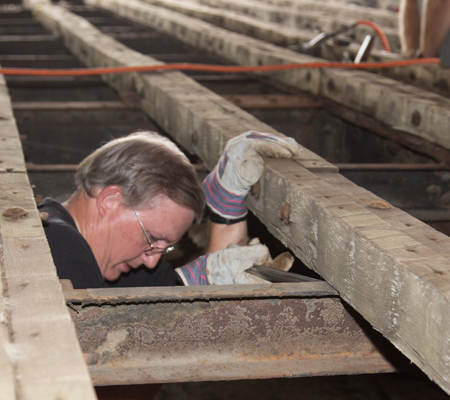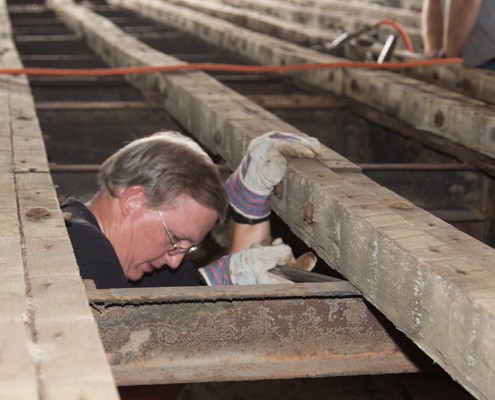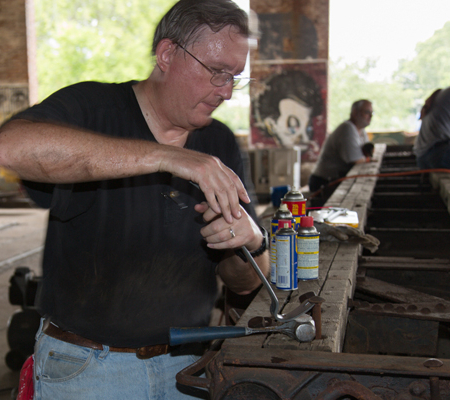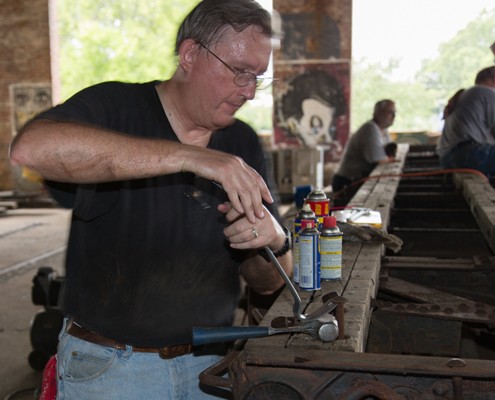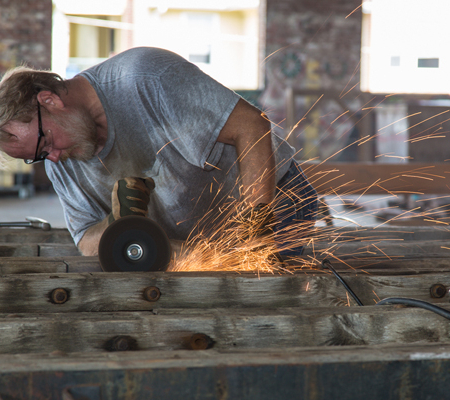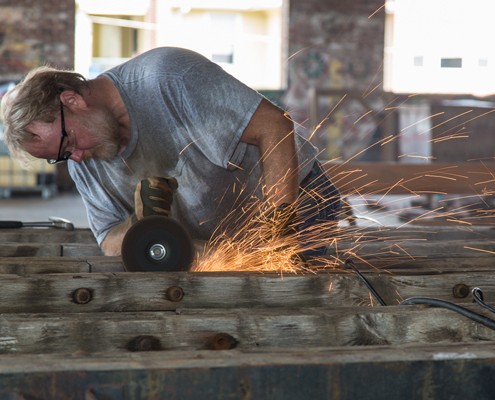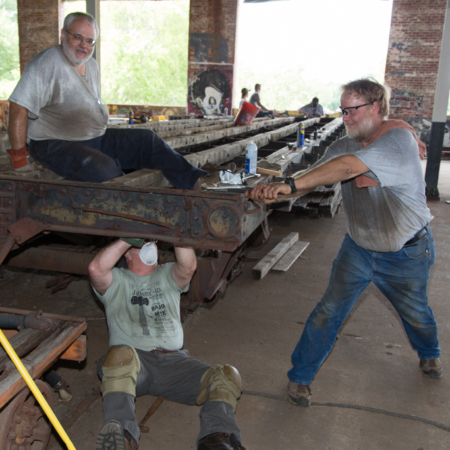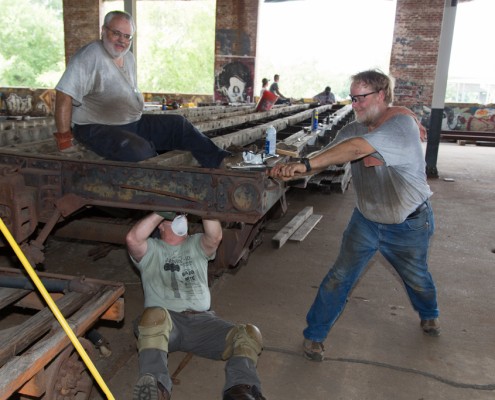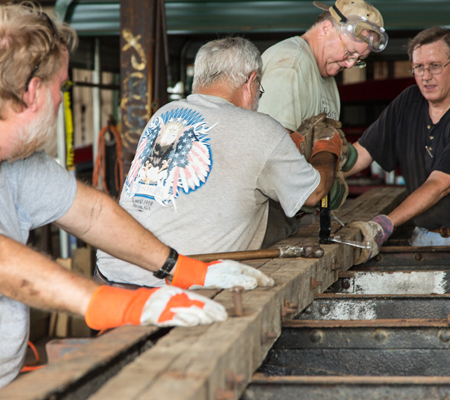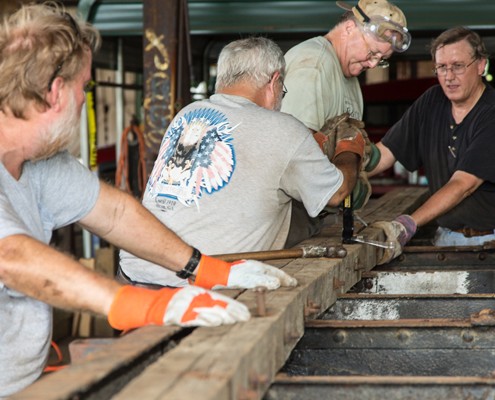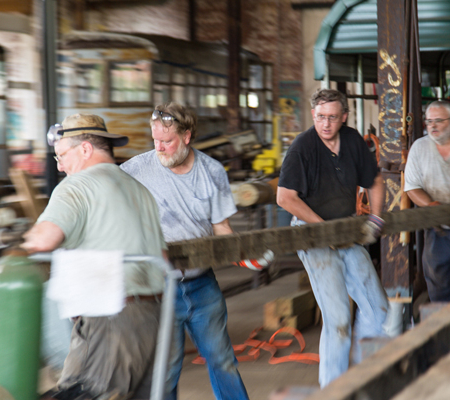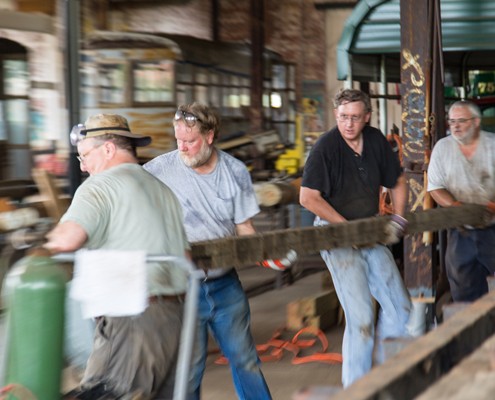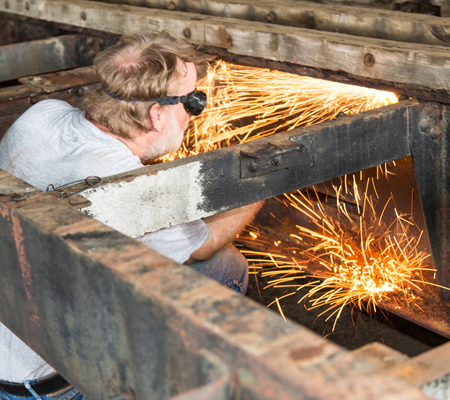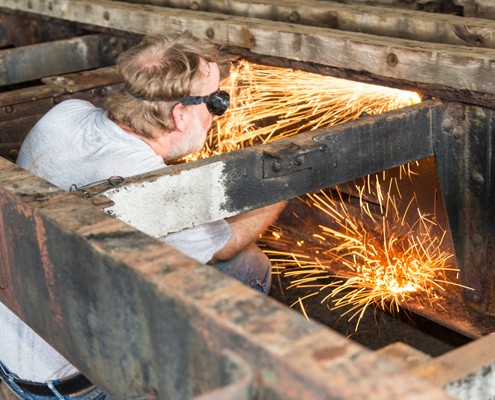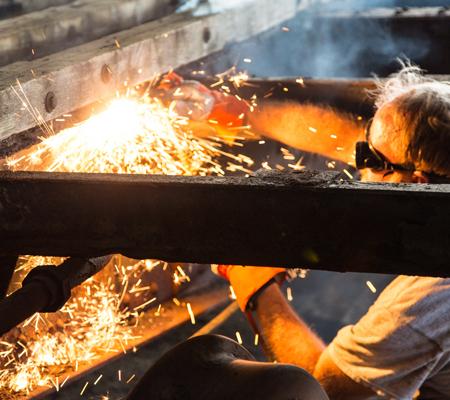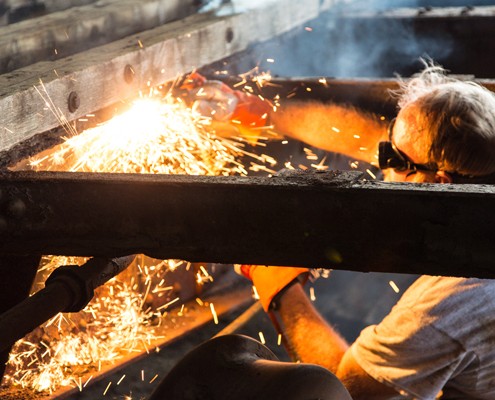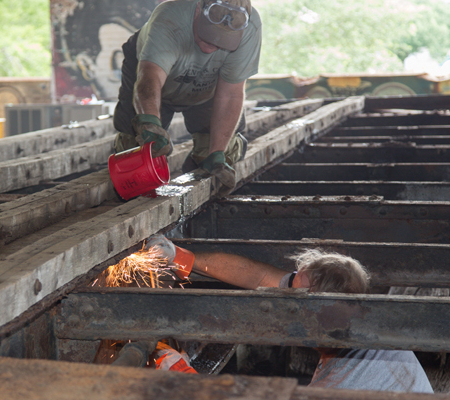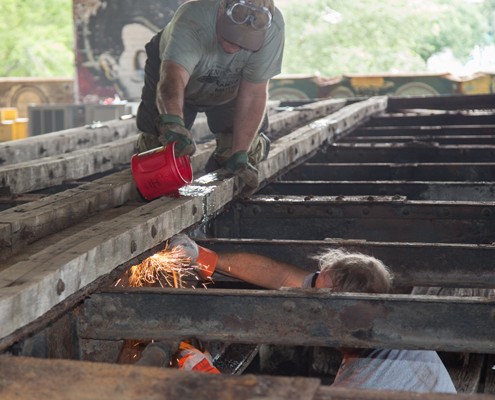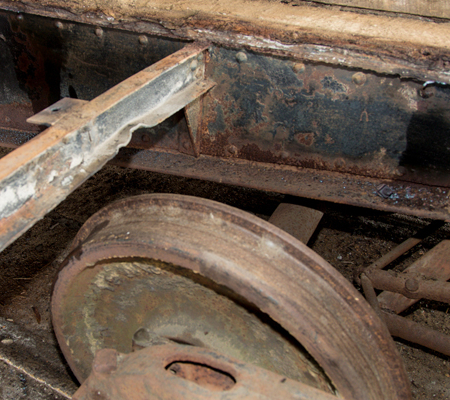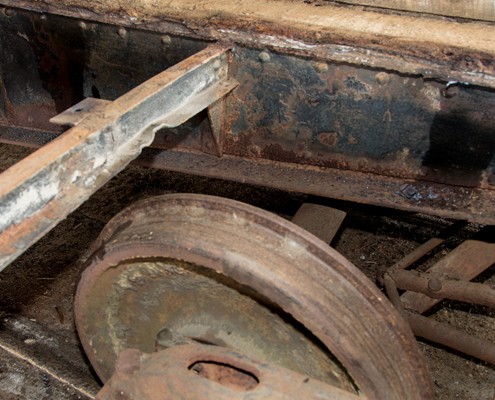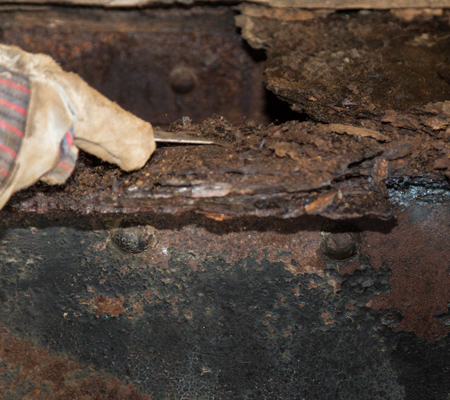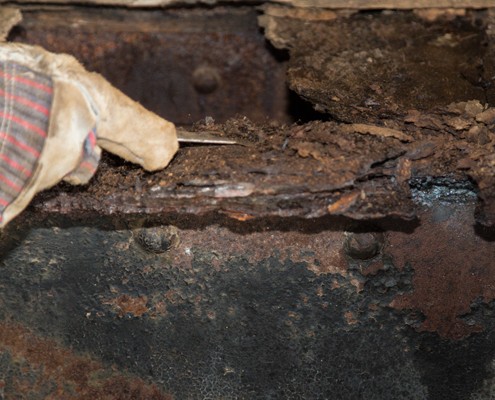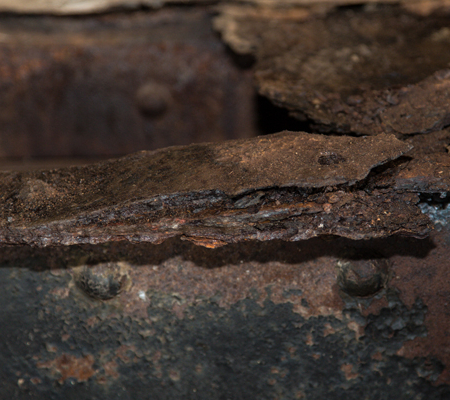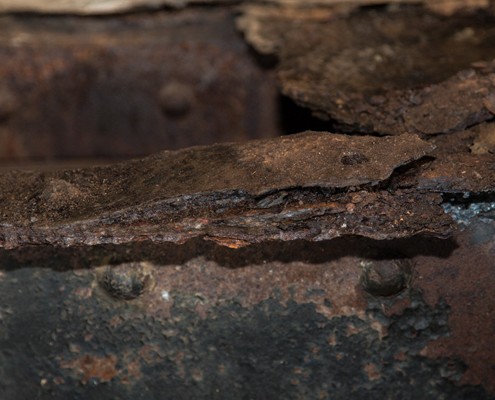On Saturday, June 29, 2013, seven CGRHS members gathered for a work session on the Society’s 1925 flat car. This was technically the third work session, the first being in October 2012 during our annual meeting in Savannah, followed in December by a half-day evaluation to determine the best course of action for the next major effort.
In late December of 2012, CGRHS President Allen Tuten and Flat Car Project Manager Stephen Syfrett had met to determine the best way to remove the wood stringers from the car frame without damaging them. We determined that 12 carriage bolts held each stringer on the frame for a total of 72 bolts to be removed. After liberally spraying several bolts near the B-end of the car with WD-40® and allowing it to work for a bit, we were able to easily remove the 1-inch square nuts with little effort. Of the 5 bolts that were tried, 3 were easily removed.
In order to reduce as much expense as possible, we decided that the next work session would attempt to recover as many of the carriage bolts for reuse as possible. Having had a 60% success rate in December, we hoped for at least a 50% success rate in June. That would mean 36 carriage bolts we would not have to buy for reassembly.
Although the first 2 bolts we tried to remove at the June work session came right out, it was all downhill from there. Despite the efforts of several in attendance, many bolts either wouldn’t break loose or simply spun in the deteriorated wood. Ultimately, no more than 12 bolts were removed, and several of those are too badly corroded for reuse. While several of us worked with the bolts, others shoveled debris off the top of the center sill and cleaned off loose rust from frame members near the end sills.
Next, Director Ken Preston tried using a grinder and cutting wheel to remove several bolts, but that took too much time. So, he switched to a cutting torch and proceeded to cut off many of the remaining bolts. We kept fire at bay by dousing the wood stringers with water.
While bolts were being cut, Society Director George Dorsey took measurements for the flat steel carrier plates that hold the couplers up in place. Both of the plates are bent, with the A-end plate especially so, allowing the coupler to droop.
By the end of the day, we had been able to remove the 3 wood stringers from the right side of the car, had cleaned most of the sand, dirt and debris off the top of the center sill, and had cleaned most debris out of the B-end right side truck frame. It was a productive day, even though we didn’t get as much accomplished as we had hoped. At the next work session we will be torch-cutting the remainder of the stringer bolts and scrapping the lumber, as the stringers are too badly deteriorated for restoration and reuse. Removal of debris from the top of the center sill has shown that metal repairs to it will be extensive.
Stephen Syfrett
Flat Car Restoration Project Manager
